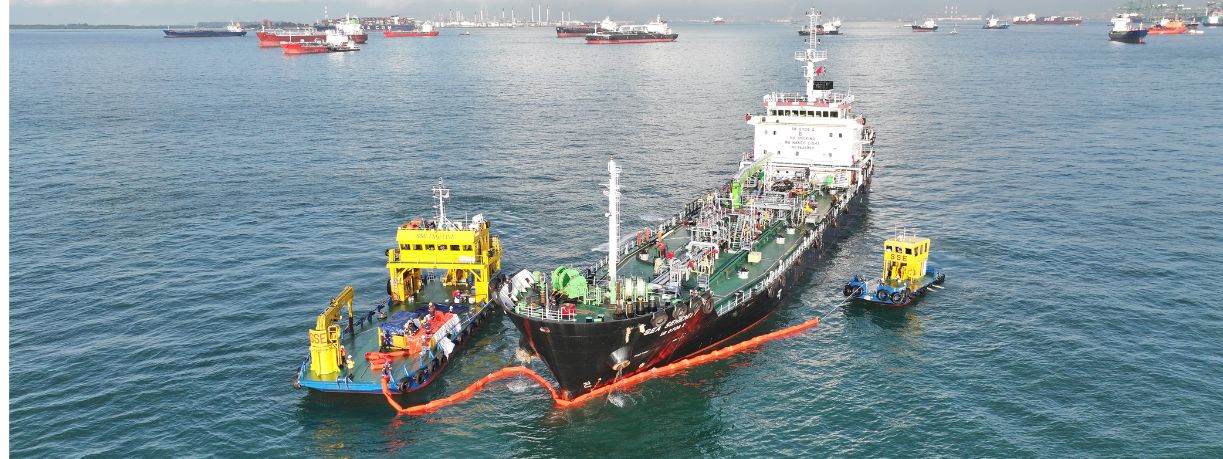Biennial Oil Spill Exercise Tests Operating Procedures and New Oil Spill Response Technologies
Singapore Holds 16th Oil Spill Exercise to Test New Technologies and Improve Response

The 16th Joint Oil Spill Exercise (JOSE) took place today alongside the 23rd Singapore International Bunkering Conference. This event, organized by the Maritime and Port Authority of Singapore (MPA), has been held every two years since 1998. The main goal of the exercise is to prepare agencies and industries to work together smoothly during oil spill emergencies in the Port of Singapore.
Participation and Key Activities
Over 100 people from 18 agencies and companies joined the 2024 edition of JOSE. The event featured two parts:
- A Table-Top Exercise – Participants discussed and planned how to respond to a major oil spill.
- Seaward Deployment Exercise – Held at the Western Anchorage near Pasir Panjang Terminal, this part involved real-time actions, such as deploying equipment to clean up oil spills.
Even nature and community group representatives were invited to observe the action, highlighting the importance of protecting the environment.
Emergency Protocols in Action
Terminal operators from Jurong Island and Pulau Bukom tested their emergency response systems during the exercise. These operators sent their own vessels to spray oil dispersants, chemicals used to break up oil on water surfaces. MPA also sent out its patrol craft to assist in the response.
Additionally, protective booms were placed around the spill area to limit the spread of oil. These booms help contain the oil, making it easier to clean up and ensuring minimal disruption to the port’s operations.
New Technologies Tested
This year’s exercise included trials of exciting new technologies that could improve oil spill clean-ups:
- KOBOT – A Compact Oil Recovery Robot
- Developed by South Korea’s KOAI Co., Ltd. with support from Hyundai Corporation.
- The robot is small (4.5 meters by 1.5 meters) and lightweight (160 kg), making it ideal for use in narrow spaces like canals and marinas.
- Operated by a single person, KOBOT can access areas that large skimmers cannot reach.
- Laser Oil-Stain Cleaning Device from BKR Engineering
- Uses powerful laser beams to break down and remove oil stains from hard surfaces.
- This tool is perfect for the final stage of clean-up, helping to remove oil stains from places like canal walls and rock structures.
Hyperspectral Imagery for Oil Detection
MPA also partnered with the Technology Centre for Offshore and Marine Singapore (TCOMS) and ST Engineering’s Commercial Aerospace to test a new way of spotting underwater oil slicks.
- Hyperspectral cameras capture a wider range of light wavelengths than regular cameras, making it easier to tell oil apart from water, even in poor lighting.
- Although this technology is still being developed, it could soon be used on drones to monitor spills.
Promoting Innovation and Future Plans
The technology trials at JOSE 2024 were held at ONE°15 Marina Sentosa Cove. MPA is committed to finding innovative solutions to improve oil spill response and give developers a chance to test their ideas.
Through events like JOSE, Singapore ensures that its agencies, companies, and communities are ready to handle emergencies while also encouraging innovation for future improvements.
JOSE 2024 successfully tested both the preparedness of different agencies and the potential of new technologies in tackling oil spills. The use of robots, lasers, and advanced cameras could soon make clean-up operations faster and more effective. Singapore continues to lead by example in maritime safety and environmental protection, staying ready to protect both its waters and community from potential hazards.
